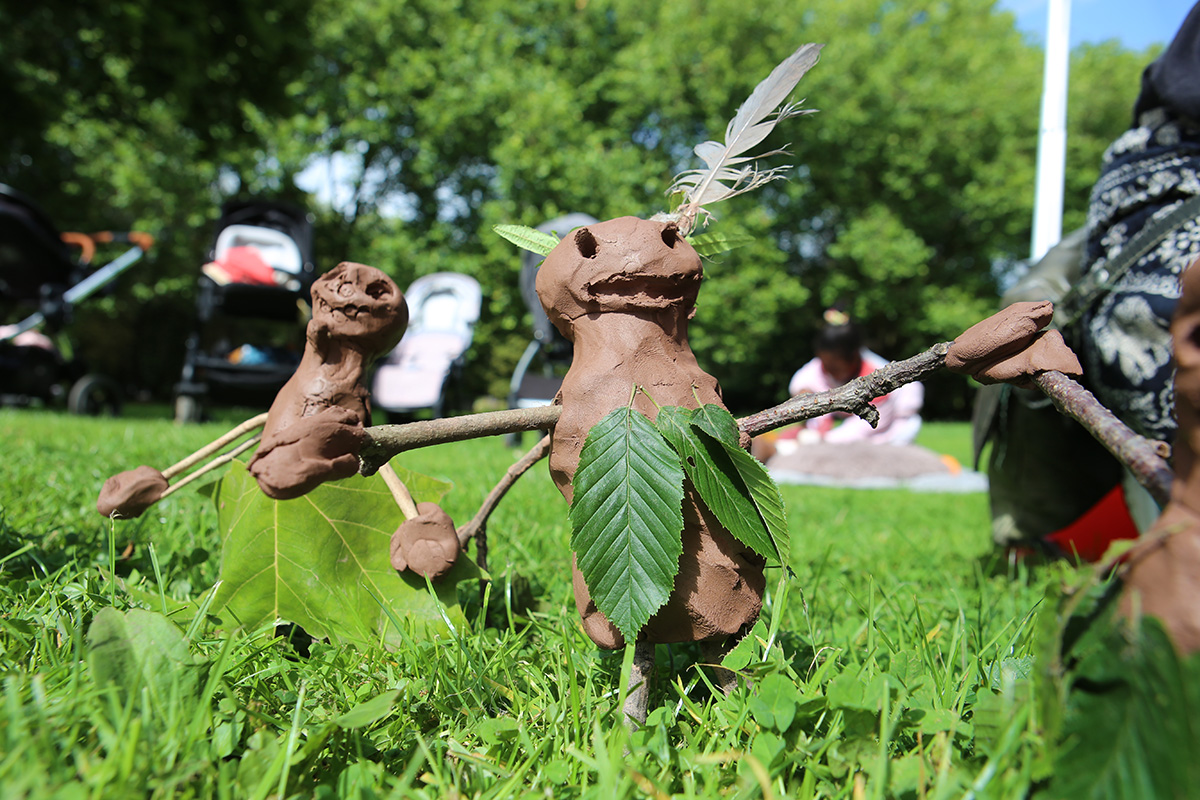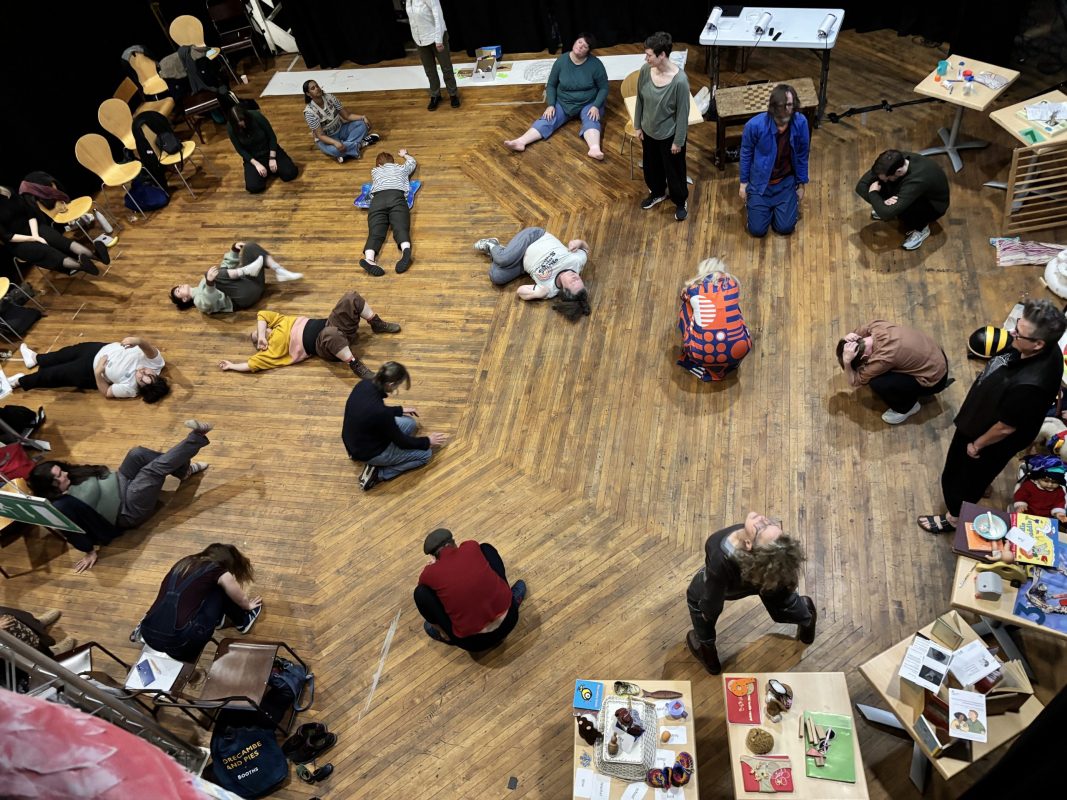On 10th June, we gathered at Horse and Bamboo theatre in Waterfoot for our first Towards Toddlerhood workshop. The project is a collaboration between researchers from three different universities, artists in residence, early years settings, and key arts / cultural organisations who are also generously hosting our workshop gatherings over the two years of the project.
As this was the first meeting, we aimed to open-up a question;
What is ‘Toddler’?
The premise of our project is that there are many different answers to this seemingly simple question, with a developmental narrative being just one possibility.
What is ‘Toddler’ – In policy? In early years practice? In the media? In the arts? What else?
The most dominant answer to ‘what is toddler?’ in our culture comes via the lens of development. The ‘red book’ that new parents receive to record their infant’s developmental milestones, and the power, authority and impact it has on the lives of toddlers and families in UK was a particular point of departure for this project.
We also reflected on how the figure of ‘the toddler’ shows up in policy (Liz Truss, former educations minister’s pithy comments about too many children running around in early years settings comes to mind), political discourse, the media and of course in arts practice. Another figure of toddlerhood that influenced the development of this project was the ‘Trump blimp balloon’ – a protest against right-wing political violence expressed through the parody of world leader as ‘tantrumming toddler’. What does this image do and tell us about toddlerhood?
All these answers have a relationship with, but do not necessarily mirror, the everyday lived experience of ‘what is toddler?’, with all its messy compromises, hopes, anxieties and humour.
Additionally, in this workshop our focus was toddler movement, leading us to ask;
What is ‘toddler’ through movement?
One way we can think about ‘child development’ itself is as a linear narrative of progress, implying a certain kind of movement, in a certain kind of direction. We explored the assumptions behind this, and alternative ways into the experience and materiality of movement, during the workshop.
“First Steps” are such a major milestone in child development lore that we are steeped in as parents, and as carers and educators of young children. “First words” carry a similar weight as a particular milestone to be celebrated and mapped onto the individual timelines of development from infancy into childhood. Both language and bipedalism are qualities that we are brought up to believe are key aspects of what makes us as humans exceptional and superior to other animals, so it makes sense that these two milestones assume such importance in the context of developmental, progressive, and chronological accounts of child development.
In this session our focus was on the moving bodies of toddlers, and ways the toddler is figured through movement. The Red Book became an anchor point as a key piece of apparatus that constructs the Toddler through movement in linear and sequential ways. In order to seek different ways to approach the Toddler through movement, we asked ourselves what we might (un)learn about the chronologies of physical development by working with a movement practitioner (Kitty Winter) and a dance practitioner (Anna MacDonald). These were some of the questions they offered to us:
Why makes our bodies still? What happens when we sit? When we lie? When we wobble? When we fall? When we go backwards instead of forwards? What sets us in motion?
How might these questions, posed through our bodily provocations help us to acknowledge and think more about the complexities of uncoupling movement and progression ?
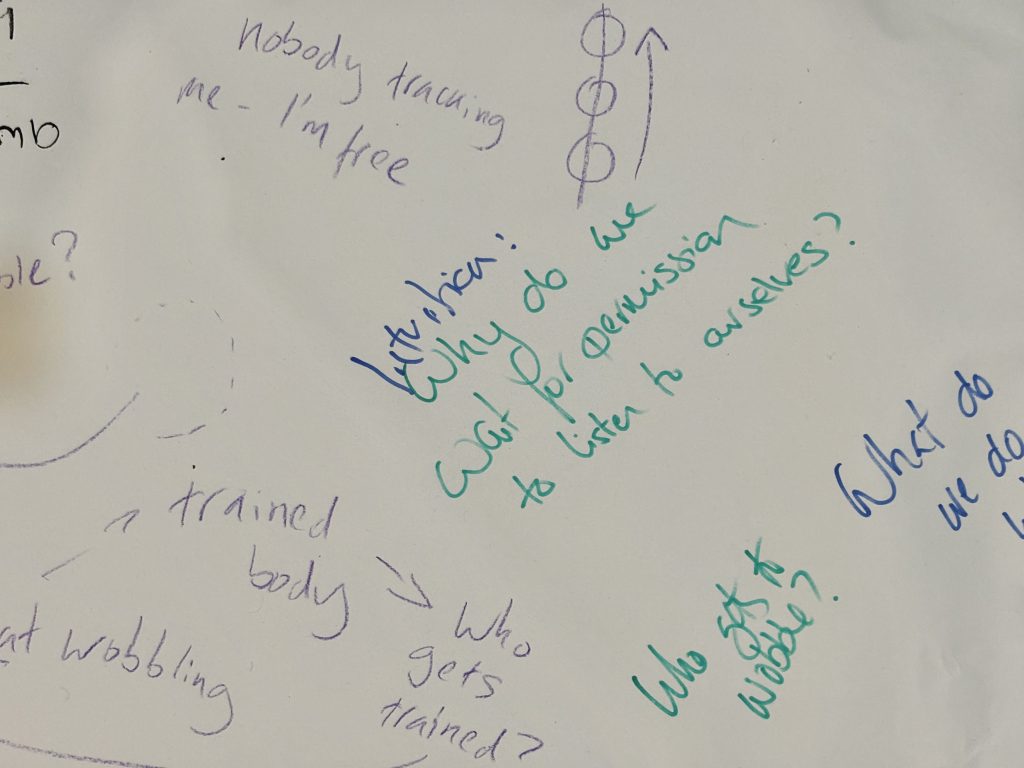
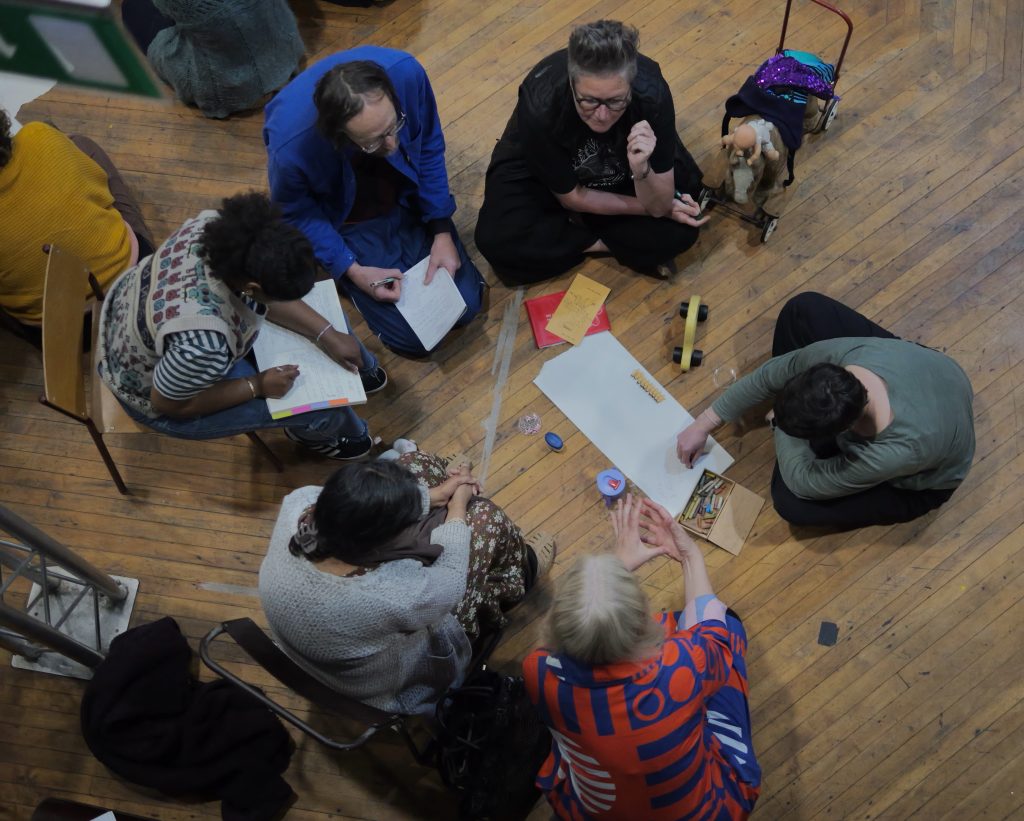
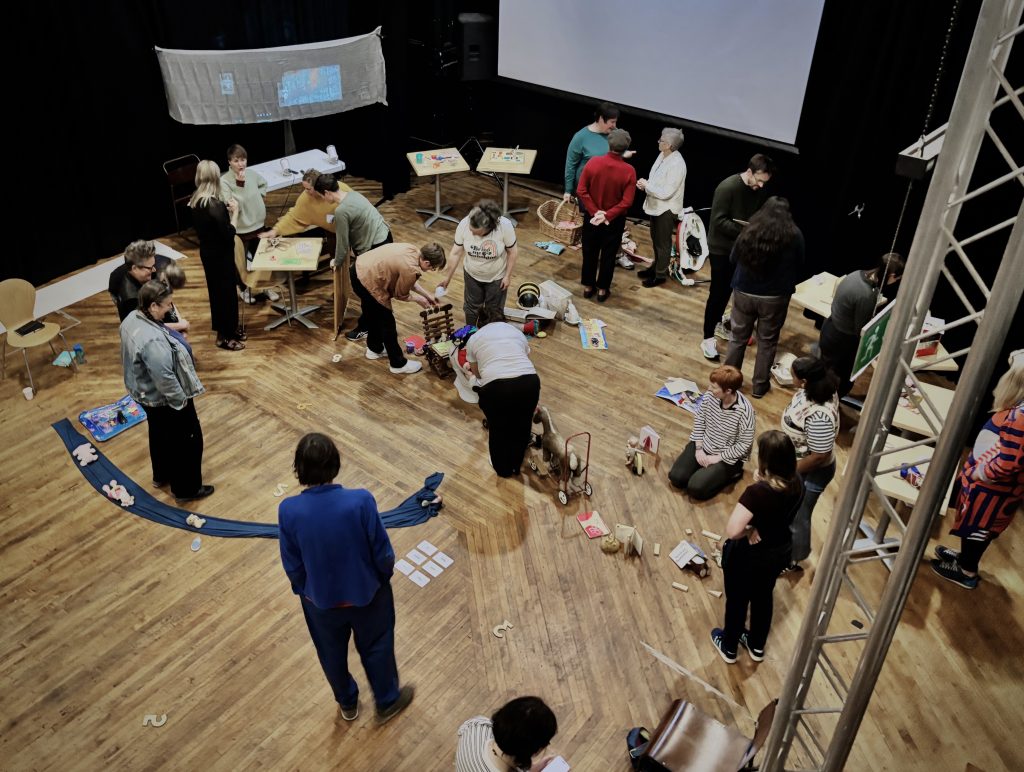
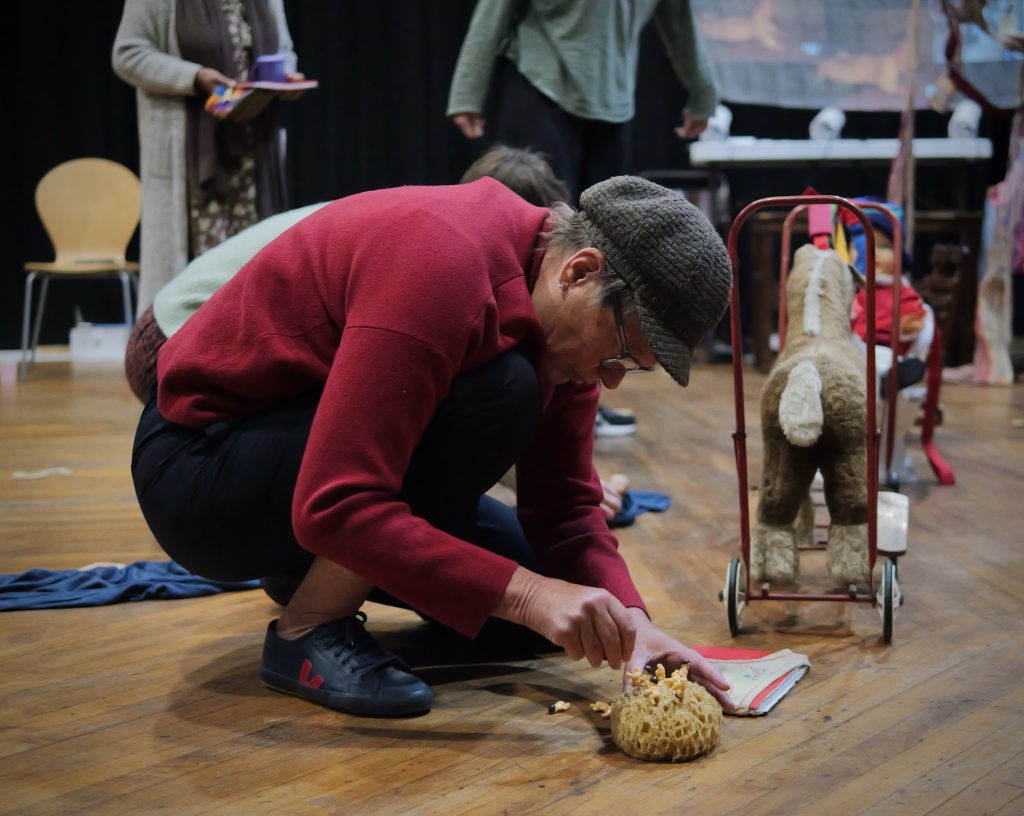
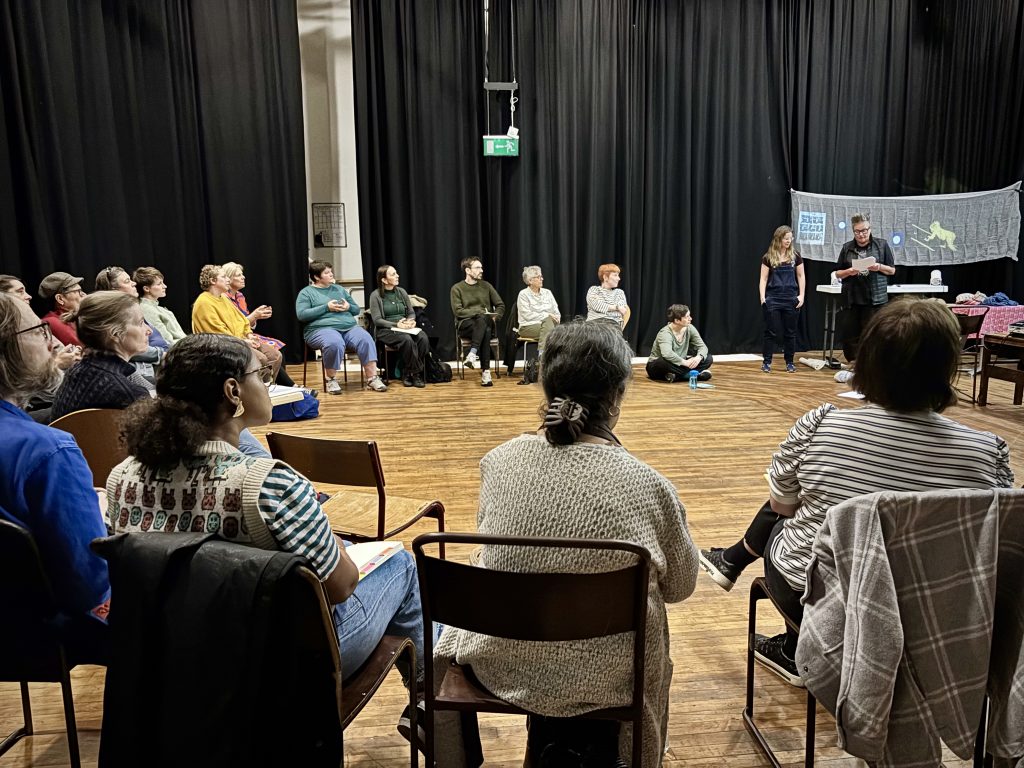
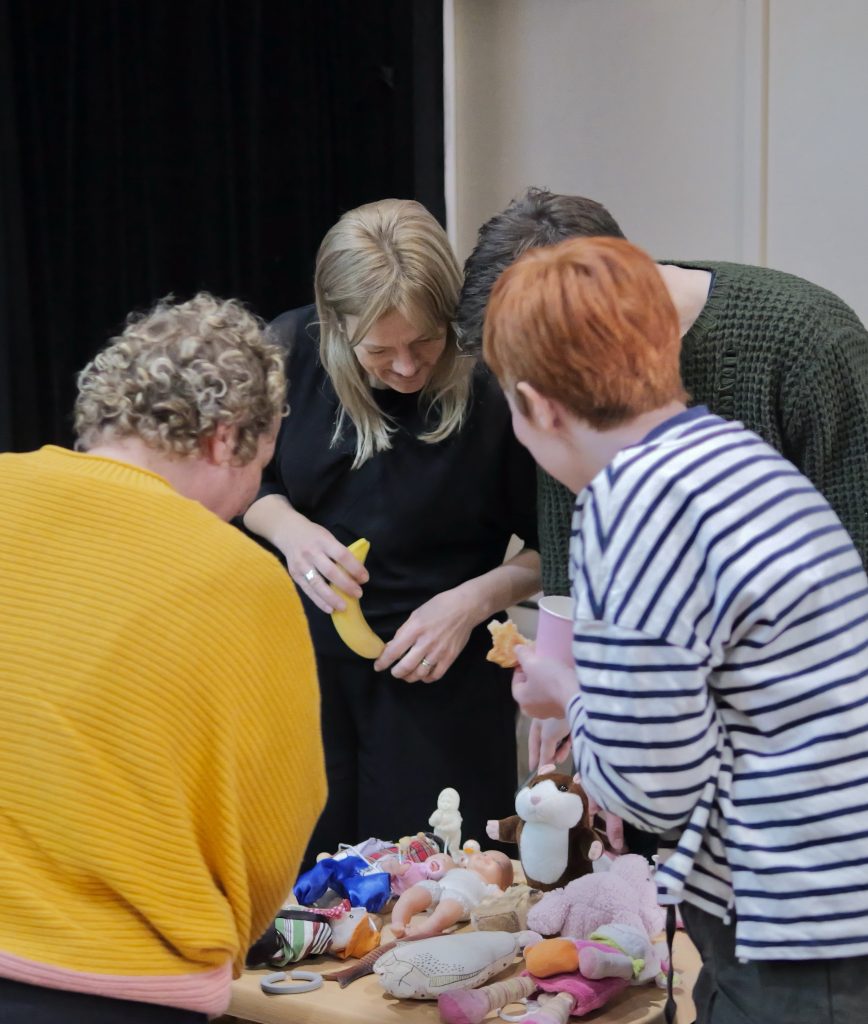
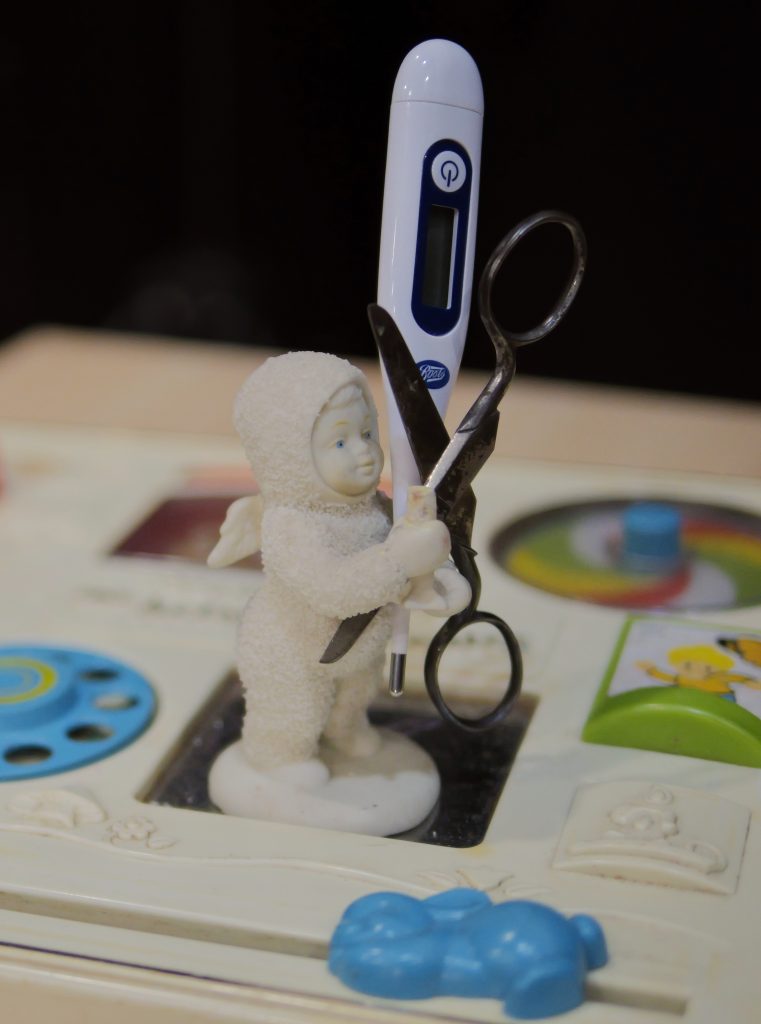
Abi Hackett and Christina MacRae, Photo credits: Huckleberry films
